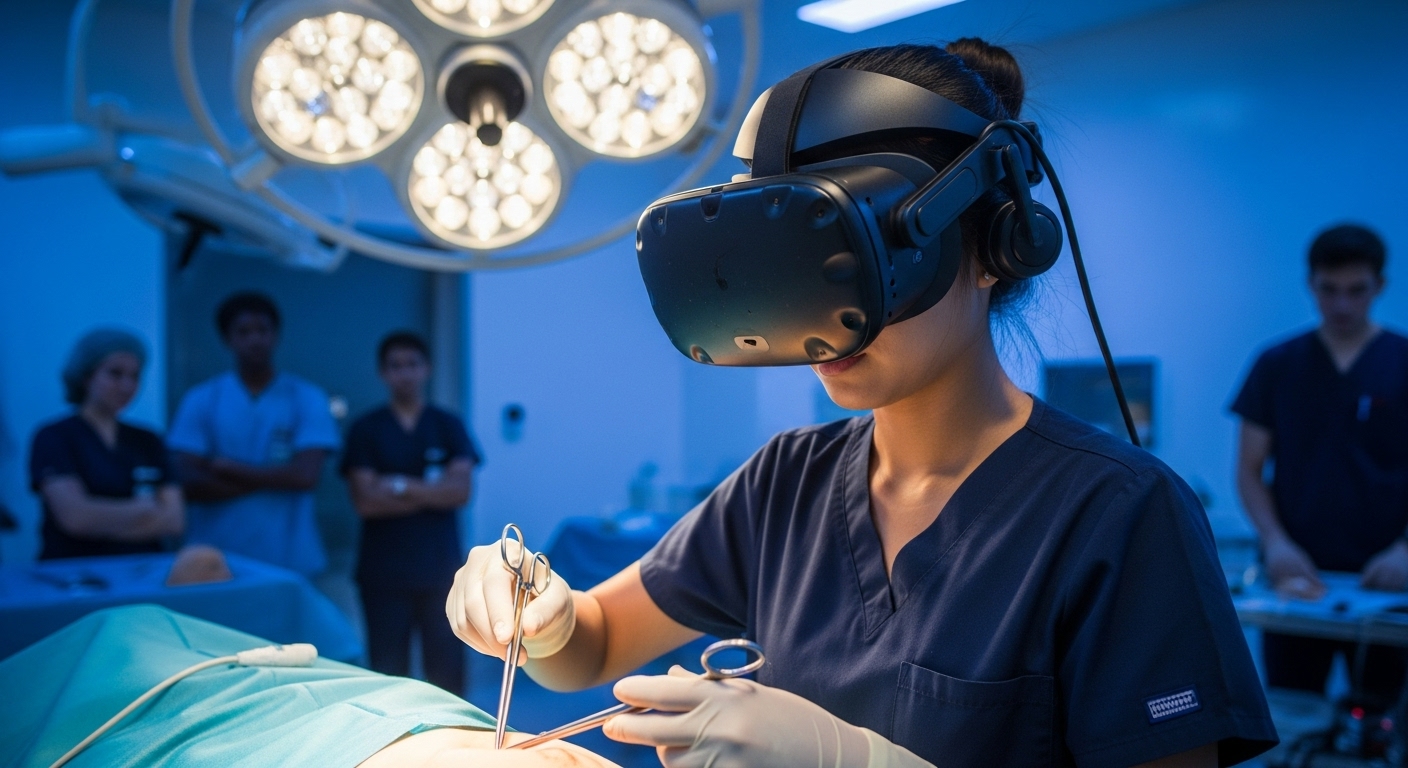Virtual reality (VR) has transcended its initial perception as solely a gaming and entertainment tool. In 2025, VR devices are increasingly recognized for their practical applications across various industries, offering innovative solutions to real-world problems. From healthcare to education and engineering, VR is revolutionizing how we approach training, design, and problem-solving. This blog post explores the essential VR device applications that are making a significant impact, moving beyond mere immersion to deliver tangible benefits. We’ll delve into the specific ways VR is being utilized, the challenges it addresses, and the exciting potential it holds for the future.
VR in Healthcare Training and Treatment
The healthcare sector is rapidly adopting VR for training medical professionals and treating patients. VR simulations offer a safe and controlled environment for surgeons to practice complex procedures without risk to real patients. Medical students can use VR to explore the human anatomy in detail, enhancing their understanding and retention. Beyond training, VR is being used in therapy to treat conditions such as PTSD, anxiety disorders, and phobias. Exposure therapy in VR allows patients to gradually confront their fears in a safe and manageable setting. For example, VR can simulate social situations for individuals with social anxiety, helping them develop coping mechanisms and build confidence. The immersive nature of VR provides a powerful tool for mental health professionals to deliver effective and personalized treatment plans. As Dr. Brenda Wiederhold, a pioneer in VR therapy, notes, VR provides a unique opportunity to recreate real-world scenarios in a controlled environment, allowing patients to confront their anxieties and develop effective coping strategies.
Revolutionizing Education with VR Field Trips and Interactive Learning
VR is transforming education by providing immersive and interactive learning experiences that go beyond traditional classroom settings. VR field trips allow students to explore historical sites, visit distant lands, and even travel through the human body, all without leaving the classroom. This immersive approach enhances engagement and improves knowledge retention. Interactive VR simulations can also make complex concepts easier to understand. For example, students can use VR to build virtual structures in engineering, conduct science experiments, or practice language skills in a simulated foreign country. The use of gamified VR learning modules further enhances the educational experience, making learning fun and rewarding. According to a recent study by the National Education Association, students who use VR in the classroom demonstrate a 20% increase in knowledge retention compared to traditional learning methods. This highlights the potential of VR to revolutionize education and prepare students for the challenges of the future.
VR for Engineering Design and Prototyping
Engineering and design firms are leveraging VR to streamline the design process, reduce costs, and improve collaboration. VR allows engineers and designers to create virtual prototypes of products and structures, enabling them to visualize and interact with their designs in a realistic environment. This helps identify potential design flaws early in the process, reducing the need for costly physical prototypes. VR collaboration tools also enable teams to work together on virtual designs, regardless of their physical location. Architects can use VR to give clients virtual tours of buildings before they are even built, allowing them to provide feedback and make design changes. The ability to visualize and interact with designs in VR enhances communication and ensures that the final product meets the needs of all stakeholders. As the lead architect at Foster + Partners stated, VR has revolutionized our design process, allowing us to create more innovative and sustainable buildings.

